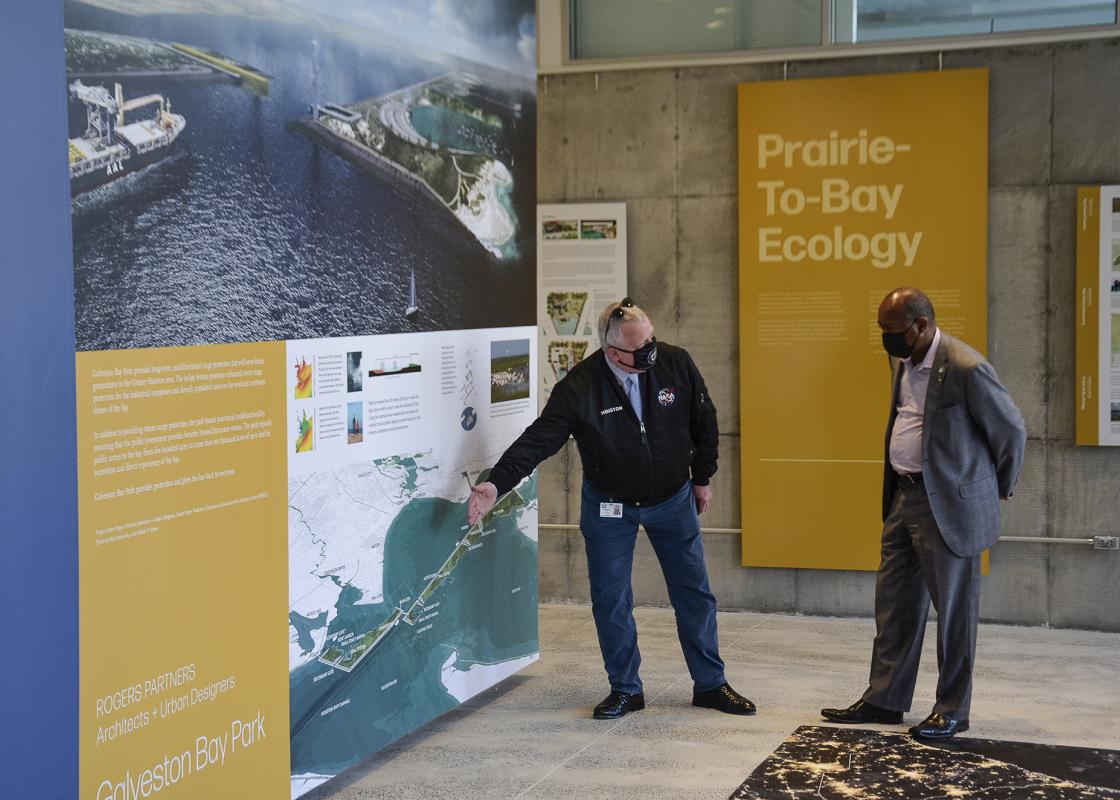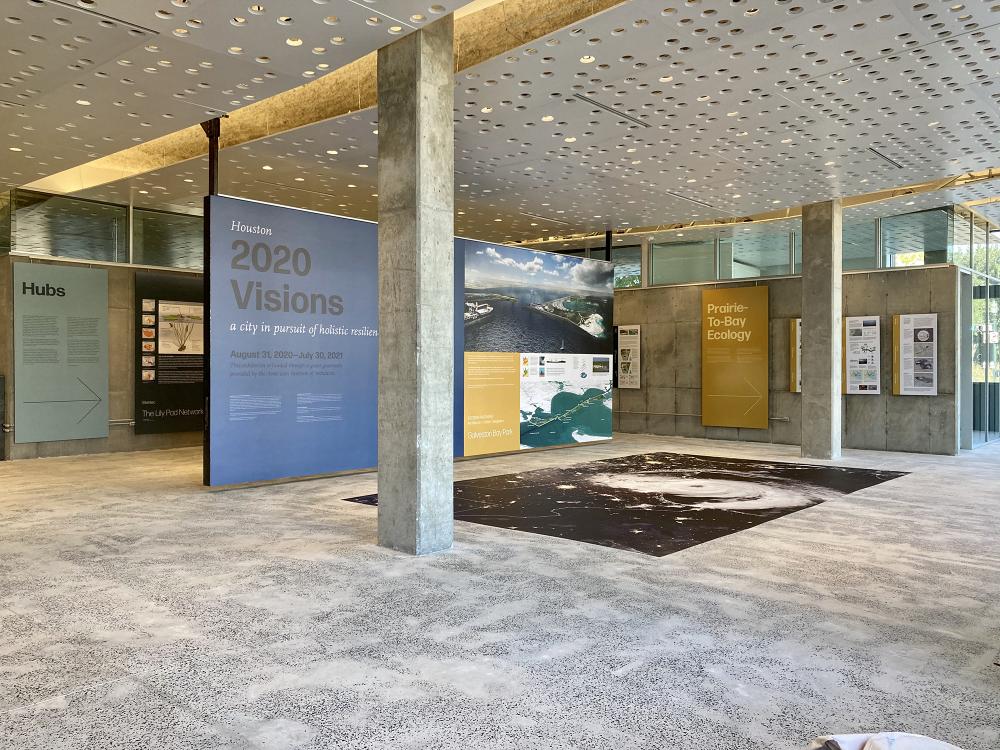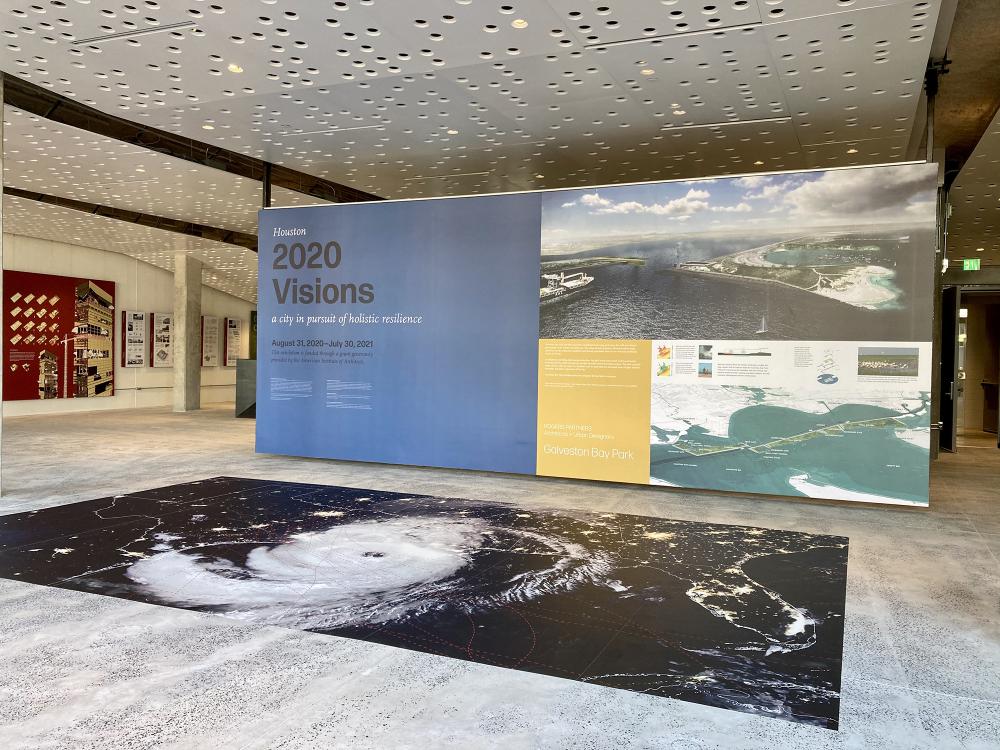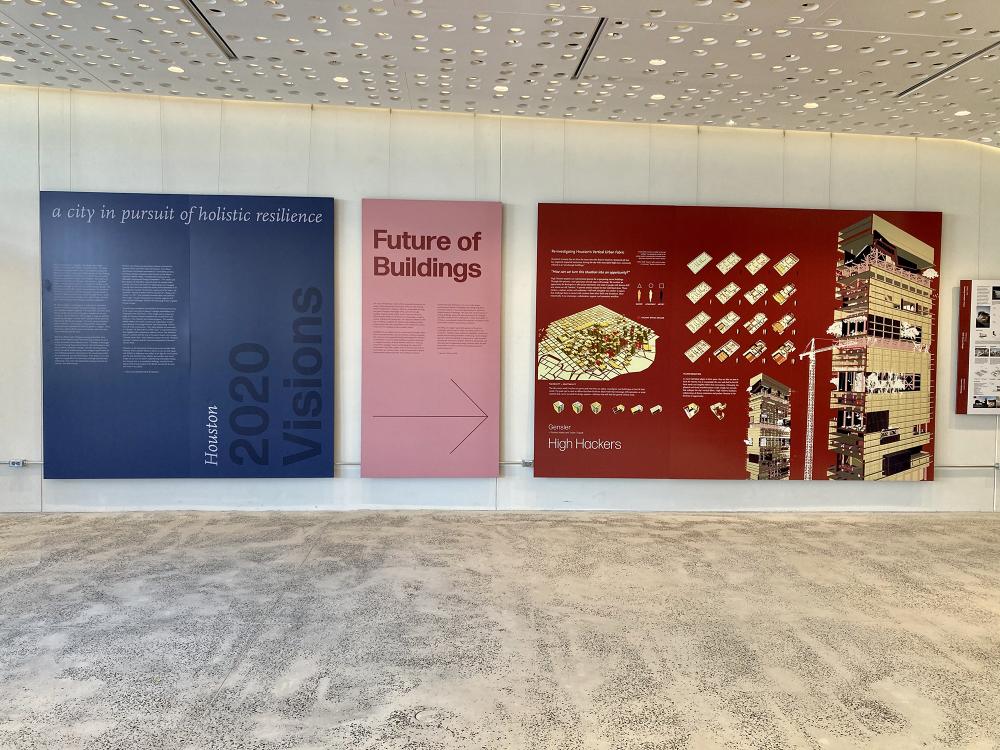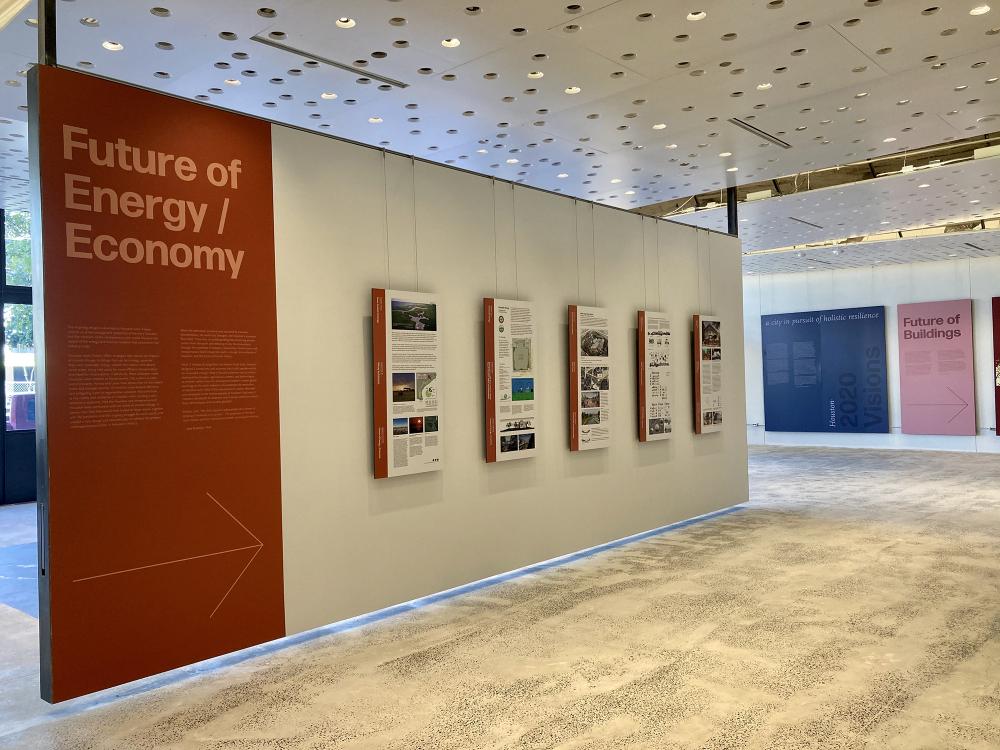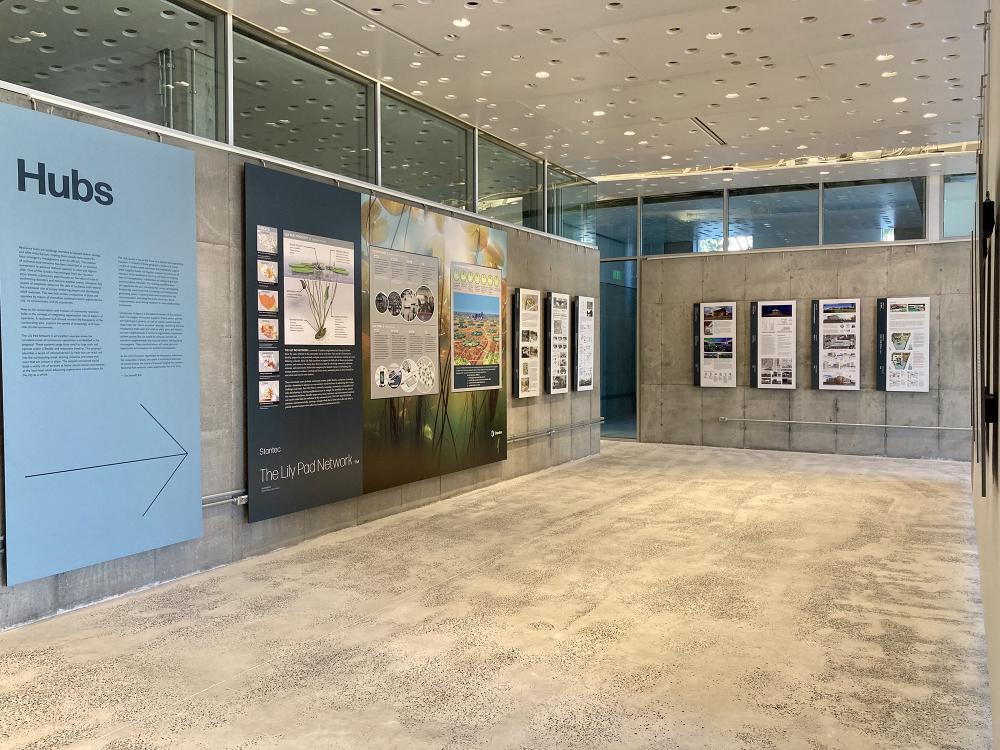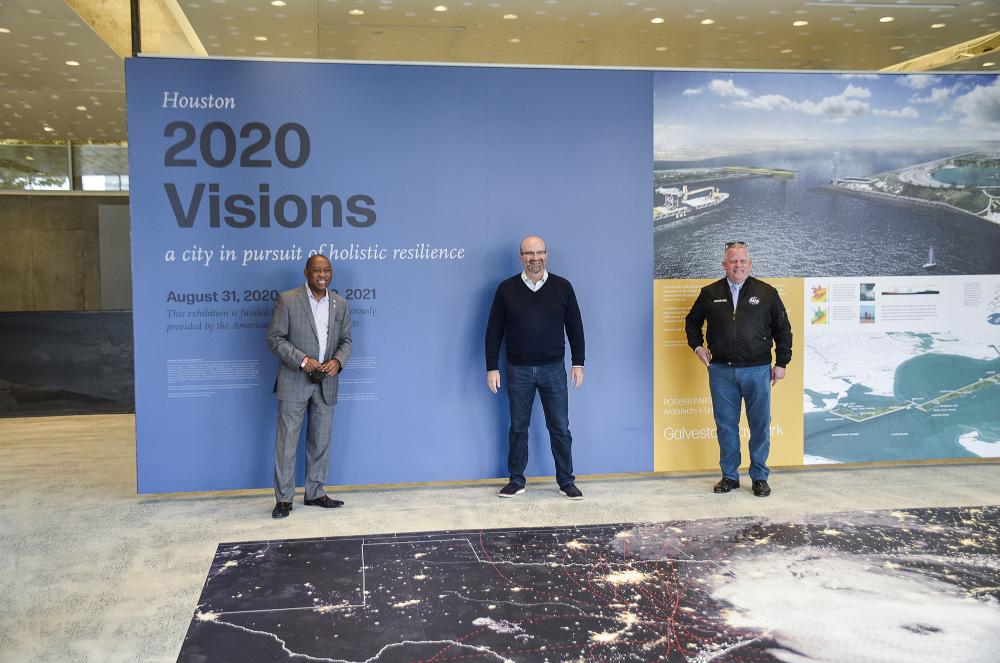It is an intense time in Texas. August 25 marked the four-year anniversary of Hurricane Harvey's landfall, with little done so far to mitigate the impact of future storms, while Hurricane Ida tore through Louisiana and the East Coast. On September 1, hundreds of new laws took effect, some of which constrain the rights of Texans, including SB 8, which bans abortion after six weeks into a pregnancy, and SB 1, which specifically targets voting initiatives used by diverse, Democratic Harris County. Additionally, last week the Texas Transportation Council announced that the North Houston Highway Improvement Project (NHHIP) would remain in their ten-year budget, signaling their continuing support for the controversial project. All this in the midst of an ongoing pandemic.
In Washington D.C., an infrastructure bill approved by the U.S. Senate awaits passage in the House of Representatives. Infrastructure—physical and social—is an urgent topic today and one that deserves to be approached holistically. “Critical infrastructure should be studied together, not as independent systems,” urged an editorial from the Houston Chronicle on September 7.
Infrastructure is one of the animating themes of Houston 2020 Visions, an exhibition at Architecture Center Houston organized by the City of Houston and AIA Houston, which is nearing the end of its installation. To discuss this show and current efforts led by the City, last month Cite Editor Jack Murphy spoke with City Council Member David W. Robinson, who has led the show's efforts from the beginning. Robinson is an alumnus of Rice Architecture and currently serves on its William Ward Watkin Council.
Houston 2020 Visions will remain open through at least September 30, 2021. See projects online or visit in-person during gallery hours. For more information, contact Jennifer Ward, jennifer@aiahouston.org.
Jack Murphy: We’re speaking at ArCH while looking at the Houston 2020 Visions exhibition. Could you briefly talk about the different themes of the work featured in the show?
David W. Robinson: Hurricane Harvey and other storms have shaped our city’s interest in themes of resilience and sustainability, which are related to global warming and climate change. After Harvey, our community of architects and design professionals wanted to do something in response to this horrible event. So, I went to Mayor Turner to ask if we could embrace a first-of-its-kind collaboration between the City of Houston and AIA Houston.
A few months later, we proposed launching a year-long call for Visions with an RFV—not an RFQ, request for qualifications. We did this on the first anniversary of the storm in 2018, which is why I find it interesting that we’re here, nearly three years later. We received over fifty entries that were evaluated in the fall of 2019 by five selected jury members who were qualified to judge the submissions. They selected the twenty-seven visions that are included in this show and grouped them into thematic “clusters.”
In 2018, the Rockefeller Foundation accepted Houston as the 101st city in their 100 Resilient Cities program. We had previously been denied entry because they deemed us to be focused on the threat of flooding only. Folks like Marissa Aho, Houston’s first Chief Resilience Officer at City Hall, reminded us that a disaster can arrive in many forms: it can be natural, it can be social strife, it can be a pandemic, it can be economic, etc.
There are visions in the exhibition that are conceptual, but many are real. The Ion, for instance, finished construction recently, and the Harris County 911 Call Center opened in 2019. There’s good work going on to make real projects that are in position as shovel ready. There’s also a clear prioritization for what happens in Houston’s historically overlooked neighborhoods.
Mayor Turner was the first visitor to this exhibition. What was his response? What has been the wider feedback from city officials?
When you walk through the show with the Mayor or the Director of the Public Works Department or the Director of the Housing Department, they're really inspired because they see real projects. Like the one in Sunnyside, which is now under review by the TCEQ; the toxic landfill is being remediated and is about to become the largest brownfield solar installation in the country. The U.S. Senate recently passed an infrastructure bill. What do you hope may come of that for our city?
I have lots of ideas. Community leaders in Houston’s northeast neighborhoods are ready to go and they want elected officials to know that. They want to know how to get funding to get going with next steps. The types of infrastructural needs raised in a call earlier this week, for instance, ranged from a traditional kind—roads, pipes, drainage, and retention ponds—to some of the things that have already been debated this year in Washington. Does WiFi constitute infrastructure? Does pre-K education? Do other social programs? The underlying need in these communities is so deep, profound, and ingrained in the system, that it constitutionally exists. When we think about reparations, for instance, or social injustice, one can go down that path very quickly in my book.
I have a very broad interpretation of the word infrastructure. I led a graduate-level course for architecture students at Texas Tech called Infrastructure in the Urban Environment. On the first class of every semester, I would have students write down their definition of a number of words, including infrastructure. And then I’d use the balance of the semester to question those definitions. What I tried to do throughout the course was introduce them to a number of leaders in our community—engineers, the design community, city officials—who have their own definitions.
One of them was my friend and former colleague on City Council Steve Costello, who's our Chief Recovery Officer. His definition was one I thought was unnecessarily narrow. He’d say that “infrastructure is everything from the soles of your feet down.” I would immediately challenge that. At the very least, it’s got to include buildings!
There’s an important history of race influencing the distribution of infrastructure. That’s part of systemic racism. You see this struggle continue today with the groups like Stop TxDOT I-45 who advocate for a more equitable version of the North Houston Highway Improvement Project than the one proposed by TxDOT.
Absolutely. It's one of the confounding things, frankly, in my experience in working with TxDOT. I do see a path forward with the I-45 project. We can talk about that if you'd like, but TxDOT’s inability to acknowledge their own history of destructiveness in neighborhoods is really their Achilles' heel. One has to acknowledge that you have a problem before you can address it.
The last paragraph of the essay that I wrote for the exhibition is a description of that:
The devastation of Hurricane Laura provides fresh evidence of the constant threat of storms to our city and region, with COVID-19 defining a new reality, as we fight for social justice and for Black Lives Matter, one wonders how much longer we can survive before implementing meaningful change. For Houston this is an existential challenge, not only for the future of the Energy Capital of the World, but also for the lives and souls of its people.
As evidenced in this show, we're talking about holistic resilience.
Visitors can see all these boards online on the Houston 2020 Visions website; what’s the power of seeing the show in person before it closes?
It's helpful to see them relating to one another as a group. If there’s any disappointment in what we've achieved, it's that COVID has really compromised the ability to showcase this effort.
The show received a significant grant from AIA national for an exhibit focused on resilience that could travel as a pedagogical tool for architects around the country. We won the grant and used the funds to create the show, but now it remains to be seen if or how the exhibit might travel and where. Pre-COVID, there was a lot of discussion about the long legs that this show should have and that there would be a condensed version of what we see here that could travel. There are ideas or concepts here that would be illustrative and instructive for other communities, even though they might face a different set of existential threats.
Our audience here is clearly Houstonians; I've escorted people from the mayor to the Consul General of Denmark to several directors for the City of Houston. I’ve spoken to Judge Hidalgo, who I hope will visit before the end of the show. There are leaders from across the region who are not yet onboard with the Galveston Bay Park Plan who I hope will see the exhibition, too.
We mean it when we say that the coastal spine is the common denominator of what needs to happen for our coastal surge protection. We take the words of the Army Corps of Engineers seriously when they say it's complimentary, because it's not going to be complimentary if we don't get the Ike Dike done. Even with the problems in Austin, I still went and stood with our governor for the signing of the bill that created the Gulf Coast Protection District.
Houston 2020 Visions is a show about resiliency during a pandemic. In some sense, the exhibition’s impact has been diminished because people can’t visit in person, but it also more deeply demonstrates the types of infrastructure that we need. How do you see that?
That’s what I'm pondering right now. With term limits, I've got a little over two years until I'm no longer a council member. I’m thinking about what can be done. I’m an at-large council member, so every square inch of the city matters to me. I believe that—I'm not just saying it. This is what inspired me to want to be a political leader. My parents met in seminary; they're both very religious people, and there's something in my DNA that wants to give back.
That was part of what I was interested in during graduate school at Rice Architecture. One semester I had a studio with the late O. Jack Mitchell; I think it was the final class he taught, which was about Main Street in Houston, pre-rail. One of the things that Jack had us do every week was to get out into the public realm. And I think through that experience, it helped me understand that not only could we draw things and ponder them in school, but when one becomes invested in a community, you actually begin to create ideas and stand up and articulate a vision for that community.
That's really what I see embodied in this show. My role has been to advocate on behalf of our municipal government to call on our community of professionals—the engineers, the architects, the creative forces that have been behind all of these submissions—to come out and say, “This is what we do.” This question of how we can make Houston more sustainable and resilient precipitated this outpouring of wonderful ideas, many of which are coming to life and becoming real.
For instance, earlier this summer, the Transportation, Technology, and Infrastructure Committee, which I chair, discussed the city moving forward with a new set of building codes. Currently, Houston uses regulations set by the Uniform Building Code issued in 2012. These are updated every three years, and today we’re in the process of moving from the 2012 code to the 2015 regulations. And we’re intentionally moving beyond that. I think of it as a Texas, two-step: we’re going to the 2015 code to prepare immediately to go not to the 2018 code but to the 2021 update. Some people asked, “Why don’t you just skip the 2015 and go to the 2021?” It’s complicated and hard to explain from a municipal governance standpoint. My explanation will stay simple here. So much work has been done to position us to adopt the 2015 that we need to do that so we can reconcile the items that are outdated and must be brought up to date. We have an active RFP that has produced four qualified firms to focus on public engagement for the adoption of the 2021 code.
In addition to the good news we heard this week from Washington D.C. about infrastructure, we received horrible news in the recent UN climate report. We had a meeting here at the City of Houston where a wonderful group of youth climate ambassadors presented before the Education Committee. They were full of energy about making our planet better. At the end of that session, I asked them: “What do you tell people who are depressed about the state of things?” And they had a clear notion of how things are getting better. I just love that message for where we are, in the space of this exhibition, with a bunch of projects that could tangibly make Houston a better place. There are pollution problems in the eastern parts of the city and in neighboring communities that aren’t taken seriously by the Texas Commission on Environmental Quality. How do you work with the state to find common ground and to make change?
I’m trying to think of how to say something positive in the spirit of faith and hope and not feel stupid.
I remember being on a boat on Lake Houston with George P. Bush of the Texas General Land Office after Harvey to review the damage caused by the release of water from Lake Conroe. We realized that of the whole board of the San Jacinto River Authority that made the decision for the release, not a single member lived in the watershed below the dam. That’s another bureaucratic change that has taken place upstream—or downstream, technically, from the dam: we’ve adjusted the composition of that board to be represented by some of those people who were impacted—as in, devastated.
In the case of the I-45 project, as First Vice Chair of The Transportation Policy Council, I worked for a significant part of the last year on language that would become a five-party Memorandum of Understanding (MOU) between the City of Houston, Harris County, METRO, TxDOT, and the Houston Galveston Area Council. Last October, we had a document that all groups supported. At the end of that meeting, we went away with the notion that the next time we met would be to confer any final changes and to sign the document for submission and approval by the Transportation Policy Council, an eight-county regional authority. But when we had the next meeting just before Thanksgiving last year, TxDOT backed out of the agreement. They said, “We’ve talked to our lawyers, and we can’t do it. What this MOU states would compromise our authority.”
The last survey they put out had this unbelievably rhetorical binary choice: either you’re for the I-45 project or you’re against it. We’re all ready to go, but we’re not ready to go with what they’ve presented. And thus far they have shown zero responsiveness to local concerns, except in some inadequate, insufficient lip service.
We hear the resounding chorus of voices, who were saying, among other things, no más. And “not in our neighborhood” and not like this—not without air quality control and not without better pollution standards. I have a hard time imagining how the governor or TxDOT could somehow pull this project away from Houston. I find it unimaginable.
There’s a reluctance in state government to accept that most Texans live in cities; the state’s four biggest cities account for 68% of the state’s population. Most Texans live in places where we’re trying to protect our health and the health of people we live with and our neighbors. The city-state divide is pretty much open warfare; I imagine it makes your job hard.
It does. But, as you know, all politics is local. It relates to the municipal nature of my business. We have to make sure that potholes are being filled, that trash is being removed, that water pressure is maintained, that people aren't dying of COVID-19. These are things that we're responsible for. There’s another maxim: “your right to swing your fist ends at my nose.” The limit of your freedom ends where it impacts my personal health. Some common decency has been utterly dismissed or forgotten, which makes this situation artificially and unhelpfully political. It’s mind-blowing to me because what seems to be at the source of it is partisan rancor. That’s where my professional experience and academic training come to bear.
It's interesting because the maintenance of infrastructure can be apolitical, in a sense, but in its distribution and its history, it’s deeply political. It’s the place where inequality is expressed most materially.
If you want to see some ugly local politics, come around when we're talking about capital improvement project monies. For instance, some of my colleagues have advocated for the last three years straight, if not every year I've been on council, for an exact, balanced equivalent distribution of capital funds. There are eleven districts, so they think the one fund should be divided equally into eleven amounts. That just doesn't make sense, for so many different reasons. Some of the central parts of our city have aging infrastructure that has decayed and deteriorated while Kingwood, which was the last significant territory of Houston to be annexed and has more recent developments, has relatively modern and healthy infrastructure. Still, they suffer from other things, like the dam upstream on Lake Conroe or exposure to storm surge in Clear Lake.
How did your training and work as an architect prepare you for public service? How does that background inform what you do on City Council?
Anderson Todd told us that being an architect requires keeping multiple balls in the air at the same time—you must be a multi-tasker. One thing that has helped is my training on complex, scientific projects, like healthcare buildings. The biggest project I've ever worked on was the first freestanding Methodist Hospital outside of the Texas Medical Center. The Sugar Land campus was the first one that was done under my signature and seal when I was at HOK for half a billion dollars. My job was Senior Project Architect, and I had to sign the drawings. That was a real baptism in a complex world.
Architects in that capacity provide a service more like air traffic control. You're coordinating the engineers, the administrators, the subconsultants, and the contractors. There’s the design team and the production team and it’s so important how those things come together. Sometimes the most vocal or impassioned person has the least significant contribution and the quietest person at the back of the lab has some brilliant insight that they whisper. You have to be able to pull all of this together in a project.
I'm blessed now because I get to work on the City of Houston as my biggest project. Like in this exhibit, we can focus on things that are shovel-ready, practical, and financed, and we can get things done. This is what’s happening front of Jones Hall, where the new Lynn Wyatt Square is under construction; it's unbelievable to see that project becoming real.
There’s also the huge range of scales in play when addressing some of our regional challenges, from the Galveston Bay Park or what we should do out on the Katy Prairie down to an accessory dwelling unit or a change in the building code. You've got to play at scale and know when the choice of a word in a regulation is going to make a difference or if the calculation off by one digit this year is going to make a huge difference for generations to come.
I think Harris County is wrestling with that. In 2018, at the same time as our request for visions, Judge Ed Emmett called a special election for the bond referendum to sponsor $2.5 billion in flood protection projects. Then shortly thereafter he was unelected by Lina Hidalgo, a fascinating change of events. Now, those projects are somehow underfunded. They're off by over a billion dollars and who's on the first lines to be cut but some of these neighborhoods in the northeast part of the county that we were talking about. Explain that. Is that political? Mathematical? Calculated? Is it, “Let's see what we can do in the back room?”
I am a firm believer in transparency in government, but there's a lot of sausage making in government and things that you might not want to see that are ugly. Like, what are the ingredients in that boudin?
David W. Robinson, FAIA, is currently serving 2.3 million constituents in the City of Houston during his third term as City Council Member for the At-Large 2 position.


